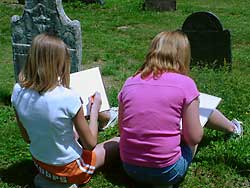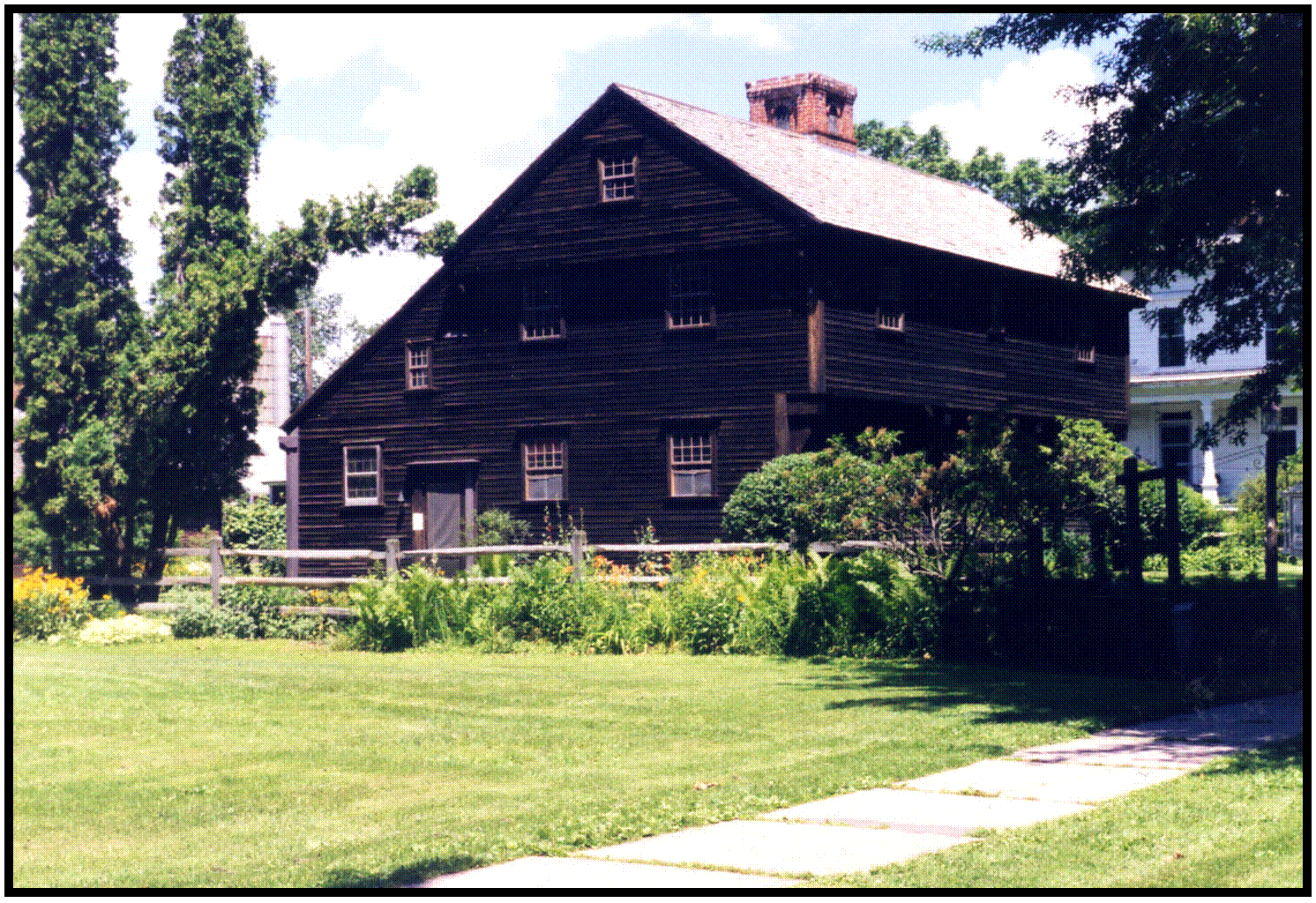Field Trips to Memorial Hall Museum and The Indian House Children's Museum

The Pocumtuck Valley Memorial Association welcomes the school-age child and teen to Deerfield, Massachusetts, with a number of adaptable age-appropriate, hands-on activities, available throughout the school year as well as during the summer.
All activities are aligned with the Massachusetts Curriculum Frameworks. For students studying everyday life in the past or Northeast Woodland Native peoples, a visit to the Indian House and/or Memorial Hall Museum will provide an opportunity to sample activities done by people long ago, examine artifacts or use their reproductions, discover what people believed and valued, and see how life has changed.
Field trip activities take place either at the Indian House Children’s Museum or Memorial Hall Museum and cover a time period from the early 18th Century through the 19th Century. A class is typically divided into smaller groups to rotate through a selection of activities which each last either 30 or 40 minutes. Please see the following Indian House and Memorial Hall offerings. We also offer Birthday Parties.
Fees for Indian House and Memorial Hall Museum field trips: $6 per student for two hours; $10 per student for four hours. To register for field trips or for more Information, please contact the Deerfield Teacher's Center at: 413-774-7476 ext. 330 or ext. 280; or via email.

Indian House
The following activities take place in the Indian House, a 20th C. replica of a house that survived the 1704 raid on Deerfield.
Colonial Life- All ages, an overview of 18th C. daily life, which includes trying on clothing, lying on a bed, and possible touch-it sessions on telling time, money, etiquette, and more.
Dame School- Gr. 2-8, students will experience an 18th C. school lesson. Activities will include role-play, recitation using hornbooks and simple stitchery.
Early Farming- Gr. K-8, a hands-on look at early farming tools, discussion of farm life and a child’s important role on the farm; seeds provided for an in-class follow-up activity.
Fireplace Cookery- all ages, seasonal, students will cook a simple snack using 18th C. “receipts”.
Lights – Gr. 1-8, a close and sometimes hands-on examination of early lighting devices and their fuels.
Native American Life- All ages, students will examine a wide variety of touch-its including tools, food, clothing, toys and games, and other aspects of Native American life.
Neighbors- Gr. 3-8, a tour of the Deerfield’s main street; students follow written directions to find sites, collect information about what the town was like in 1704, and meet to report out.
Nuthatch- Gr. 3-12, a first person narrative presented by a costumed museum teacher who portrays a fictional Native Pocumtuck woman who left her homeland in the 17th century. Issues of land ownership, the beaver trade, and assimilation are incorporated into the narrative and ensuing discussion.
Stenciling- Gr. 1-12, students try their hands at a decorative art popular in the late 18th and early 19th centuries.
Taverns- Gr. 2-12, we look at what went on in a tavern and make and play a tavern game or fold and seal a letter.
Textiles- Gr. 3-12, students may try their hands at carding and weaving to learn about 19th C. fabric production.
Underwear- All ages, find out what men, women, and children from long ago put on first. Students will have the opportunity to examine and try on old-fashioned underwear such as hoops, stays, and drawers from a variety of eras.
Voices from the Past- All ages, a museum teacher in 18th C. clothing and in role will tell the story of one of the captives from the 1704 raid on Deerfield.
Layers of History Walk- Gr. 4-12, a tour of Deerfield’s main street with a focus on the impact of the town’s settlement by the English on Deerfield’s original inhabitants- the Pocumtuck people. Differences in land use by each group are explored and students learn why the English chose to settle in Deerfield and the effect their use of resources and lifestyle choices had on the original inhabitants, the African and Indigenous people they enslaved, and future generations. Students investigate the choices each group had to make to survive and how each choice would change their future. Images are examined for evidence of land use and memorials are pointed out to help students consider the attitudes different generations had about their societies.

Memorial Hall Museum
19th C. School Lesson- Gr. 1-8, an early 19th century one-room school lesson to include role-play and a historic lesson, takes place in an old school room.
About Town- Gr. 3-12, a walking tour of Deerfield’s main street, with an emphasis on either architecture or the town’s appearance in the early 18th C.
Gifts from the 1704 Deerfield Raid- Gr. 6 & up, examine gifts from a Deerfield captive's Native husband to her brother and from her Native descendant to one in Deerfield. Discuss the importance of gift giving, their value to each group, and family ties over time. Examine and discuss the value of the museum's only artifact from 1704- a scarred door.
Memorial Gallery- Gr. 3-8, using touch-its and question cards, students will search for clues to piece together who was involved in the 1704 raid on Deerfield and why they attacked.
Museum Sampler- All ages, a mini-tour of the museum with a child’s interests in mind, including Deerfield’s famous Old Indian House Door.
Native American Gallery-
Option 1- All ages, students will examine a variety of touch-its,
including tools and trade items, with the contact and pre-contact periods
as a focus.
Option 2- All ages, students will examine the museum’s collection
of contemporary Native American art made by descendants of people taken
captive in the 1704 Raid on Deerfield. Discussion will cover symbolism found
in the artwork and the unique historic and community connection between
Deerfield and these artists.
Old Time Amusements Gr. K- 6, a potpourri of activities are sampled including outdoor and/or indoor games and old-fashioned toys. Children might also construct a toy or a game.
Quilts- All ages, an examination of the museum’s
quilt collection to examine how and why quilts were made, and a choice of
hands-on activities:
Option 1- students may design their own quilt block with wallpaper
and glue
Option 2- students manipulate cloth or paper geometric shapes to
explore symmetrical design possibilities and if time permits, design their
own quilt block with wallpaper and glue.
Tool Gallery- Gr. K-6, students will examine the museum’s collection of farm and household tools along with accompanying primary sources such as diaries and advertisements to understand that they can study different kinds of primary sources to learn about tools and how they work. They will also understand that some tools contain simple machines.







